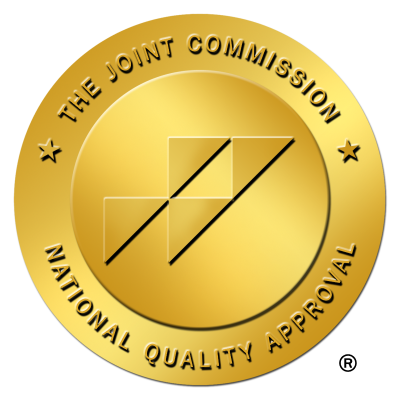Signs of Addiction: Spot Them Early

Key Takeaways
- Recognize the signs of addiction early: Persistent cravings, increased tolerance, withdrawal symptoms, and behavioral changes signal substance use disorder—not a character flaw.
- Use evidence-based screening tools: CAGE and ASSIST questionnaires provide objective, confidential assessments to clarify risk and guide next steps.
- Match treatment to your real-world needs: Choose medical detox for severe withdrawal, outpatient programs for flexibility, or inpatient care for intensive support based on your situation.
- Address co-occurring mental health conditions: Integrated dual diagnosis programs treat substance use and mental health symptoms together for lasting recovery.
- Act now to preserve your options: Early intervention improves outcomes, protects relationships, and reduces long-term health complications—every step forward counts.
Understanding Addiction as a Health Condition
If you've spotted the early signs of addiction—persistent cravings, changing behaviors, or struggles to control use—you're taking a powerful first step. Many adults hesitate, thinking dependence is a flaw, but research shows substance use disorder is a genuine medical condition shaped by brain changes, not moral weakness.2
Recognizing these warning signs, rather than ignoring them, allows for timely intervention and gives you or your loved one the best chance at sustainable recovery.
The Science Behind Substance Use Disorders
Let's turn to brain science—the foundation for understanding the signs of addiction. When substances interact with your reward system, they trigger powerful dopamine surges.
Over time, these reactions physically reshape the brain's neural pathways, making urges feel nearly impossible to resist. This is a health issue, not a reflection of character.
Researchers now measure these neurological changes to catch warning signs earlier than ever.3 You're not imagining how tough this feels: these changes explain why overcoming substance use alone is so difficult.
How Addiction Alters Brain Function
Repeated exposure to alcohol or drugs fundamentally rewires your brain, especially in areas that control decision-making, impulse management, and motivation.
The prefrontal cortex—your brain's "control center"—begins to function less effectively, while the limbic system grows hypersensitive to substance cues, fueling compulsive urges.3
These changes make quitting incredibly challenging and help explain why signs of addiction—such as persistent cravings, rising tolerance, and overwhelming focus on obtaining substances—are not simply a matter of willpower. You're certainly not alone; these brain alterations are both measurable and reversible with the right support.
Physical and Behavioral Warning Signs
Noticing the signs of addiction early can feel overwhelming, but even subtle shifts in routine or appearance are important to catch.
These observable patterns—often paired with increased irritability or mood instability—signal concern and warrant attention.3 Each step you take to recognize these warning signs makes a real difference.
Distinguishing Early-Stage and Advanced Symptoms
Learning to tell apart early-stage signs of addiction from advanced symptoms matters deeply—you deserve clarity.
- Early-Stage Signs: Forgetfulness, mood swings after using, disrupted sleep that feel easy to downplay
- Advanced Symptoms: Cognitive decline, marked personality changes, difficulty maintaining work or relationships
As the substance use disorder advances, cognitive decline, marked personality changes, and difficulty maintaining work or relationships begin to stand out.3
Progression isn't the same for everyone—timing can depend on genetics and use patterns. Acting early, with outpatient support or counseling, creates much better outcomes than waiting until daily life is severely disrupted. You are not alone—taking action now can truly shift your path forward.
Dispelling Stigma: A Medical Perspective
Facing the signs of addiction is hard enough—navigating the stigma shouldn't be one more hurdle. Medical professionals now firmly view substance use disorders as health conditions that benefit from treatment, not blame or shame.2
When warning signs appear, you deserve support just as you would with diabetes or hypertension.
Treating addiction as a medical issue—backed by research and clinical protocols—increases treatment engagement and paves the way for better recovery outcomes. You're making a proactive, courageous choice—one that real-world healthcare systems are built to honor.
Addressing Stigma and Common Misconceptions
We often underestimate how powerful stigma can be when early signs of addiction or dependency show up in our lives or those we care about. Too many people hesitate to seek help, fearing they'll be judged as weak or lacking self-control.
In reality, modern research confirms that substance use disorder is a medical condition involving actual changes in brain chemistry—not a character flaw or moral failing.2
Old beliefs can cause shame and make individuals hide issues instead of pursuing honest conversations or professional support. Remember: recognizing substance-related warning signs is a strength, not something that deserves blame.
Ethical Considerations and Patient Privacy
You deserve to know—when you share concerns about the signs of addiction with a healthcare professional, your privacy is protected by law and professional ethics.
Strict confidentiality under HIPAA and licensing standards means your information is safeguarded, empowering you to seek help without fear of stigma or unwanted disclosure.2
No provider should ever share your assessment details with anyone outside your care team without your explicit consent. This secure environment is essential for honest conversations about substance use, behavioral health, and co-occurring conditions. Remember, your health and trust come first—your journey is respected every step of the way.
Societal Impact and Economic Costs of Delayed Care
Delaying action when you notice the signs of addiction carries heavy consequences—not just for individuals, but for whole communities.
Each year, untreated substance use leads to enormous financial strain, with costs in the U.S. surpassing $740 billion due to healthcare bills, missed work, and legal system expenses.2
I've seen firsthand how postponed treatment results in more severe health crises and extended hospitalizations. Every time early warning signs or behavioral changes are addressed quickly, the burden on families, businesses, and public health drops. Remember, seeking help early doesn't just benefit you—it ripples out and lightens the load for everyone.
Self-Assessment: Identifying Personal Risk
Recognizing the early signs of addiction starts with a candid self-assessment—one of the bravest actions you can take before problems escalate.
Tools such as the CAGE or ASSIST questionnaires can provide honest feedback about substance use patterns, often revealing risk indicators like denial or minimization.4
By pausing to evaluate your triggers, behavioral changes, or emotional dependence on substances, you gain critical clarity. Every step toward self-awareness is progress—you're showing real strength, and that matters.
Diagnostic Questions for Early Detection
To recognize the signs of addiction in your own life, challenge yourself with practical, research-backed questions:4
- Do I use substances to manage stress, anxiety, or negative moods?
- Has my need for higher amounts or frequency increased?
- Am I avoiding responsibilities, or do I feel defensive when loved ones raise concerns?
- Have I tried to cut back but found it difficult to follow through?
- Do I experience physical or emotional discomfort when I stop using?
These honest questions uncover substance use patterns, behavioral changes, and emerging dependency—crucial for spotting substance misuse early. Your self-reflection matters; catching these patterns now can change your path to recovery.
When to Seek Professional Screening
If your self-assessment reveals substance use patterns that disrupt relationships, mood stability, or your everyday routine, it's a sign it's time for a professional screening.
I assure you, you're not alone—thousands face this moment every year, and reaching out early helps prevent those minor warning signs from turning into larger crises.
Healthcare professionals use evidence-based tools to provide unbiased, confidential assessments, moving beyond self-doubt or denial.4 Prioritizing early support is an active step toward reclaiming your health and future.
Integrated Approaches: Tools Like CAGE and ASSIST
You deserve practical tools that cut through doubt when you're worried about the signs of addiction or substance misuse. Medical professionals often start with standardized screening tools like the CAGE questionnaire and the ASSIST (Alcohol, Smoking and Substance Involvement Screening Test).
Both tools only take a few minutes and provide research-backed clarity, helping you and your provider make decisions grounded in evidence, not guesswork. Early, honest assessment can open the door to life-changing support.
Frameworks and Criteria for Taking Action
Recognizing the signs of addiction is a courageous milestone, but translating that awareness into action takes a step-by-step framework.
With real life at stake, you need criteria that help you gauge severity, weigh mental health and family considerations, and choose a responsive path forward.
Decision-making tools—like severity assessments and risk checklists—ground you in facts and give direction even when emotions run high.2 Whether you're a working professional seeking privacy or dealing with a family crisis, structured intervention criteria empower you to act with clarity, not fear or overwhelm.
Creating a Personalized Decision Framework
When you're faced with the signs of addiction—persistent cravings, withdrawal symptoms, or declines in health—it's essential to use a structured tool for your next steps.
Start with a checklist:
- Identify the frequency and impact of substance use
- Document changes to mood or motivation
- Assess effects on daily life
- Weigh these against your personal realities, including family demands, job stress, and mental health history
This approach helps you step beyond fear, making a plan rooted in real risk factors and expert evidence.2 Every thoughtfully chosen step on this recovery path matters.
Criteria for Assessing Severity and Urgency
When the signs of addiction begin to disrupt your routine, having a reliable way to rate severity and urgency is vital—your wellbeing depends on it. I recommend a three-level model:
If these substance misuse risks surface, timely intervention is essential. Remember, every escalation demands your attention.
Weighting Factors: Mental Health, Family, and Career
When evaluating the signs of addiction, your decision truly needs to address the realities of your mental health, family life, and career demands—each element can either support or complicate recovery.
- Mental Health: Co-occurring conditions like anxiety or trauma increase complexity and require integrated support2
- Family Responsibilities: If you're a single parent, childcare support isn't just helpful, it's often necessary
- Career Considerations: High-pressure careers or licensed professions may introduce regulatory risks or confidentiality concerns that directly shape treatment options
Regardless of your situation, balancing these behavioral health influences gives your recovery plan the best chance at lasting change. Remember, choosing support that fits your real-world responsibilities is proactive, not selfish—you're building a foundation for sustained wellness.
Balancing Confidentiality with Effective Support
Protecting your privacy while seeking help for the signs of addiction can feel daunting. You deserve both safety and support—these aren't mutually exclusive.
Start by identifying one or two people who genuinely respect boundaries and can keep information confidential. Healthcare professionals are, by law, required to safeguard your disclosure.2
With friends or family, share only what is necessary, specifying what details should stay private. Remember, isolation is a risk—building the right support network matters for lasting recovery.
Choosing the Right Intervention Path
Selecting the right intervention when you notice signs of addiction demands care and honesty—your health and stability are worth it.
You'll want to match treatment level to real-world risk:
- Medical detox is vital with severe withdrawal symptoms (especially from substances like alcohol or benzodiazepines)3
- Outpatient counseling fits when symptoms are milder and your environment remains supportive
- If you're struggling with repeated lapses, overwhelming cravings, or unsafe surroundings, a residential program may be the correct next step
Each path requires emotional courage and adaptation, but you do not have to face these choices alone.
Medical Detox, Outpatient, or Inpatient Care
Choosing between medical detox, outpatient programs, or inpatient care comes down to how severe your signs of addiction are, your withdrawal risks, and what's truly happening at home or work.
You're not alone—these decisions demand both honest self-reflection and, often, expert input. Every step toward the right level of support strengthens your recovery.
Dual Diagnosis and Integrated Service Needs
If you're spotting signs of addiction alongside depression, anxiety, trauma, or mood swings, you may be facing what's called a dual diagnosis.
In my experience, treating both substance use and co-occurring mental health symptoms at the same time is non-negotiable for real, lasting progress. About 60% of people dealing with substance concerns also struggle with another mental health condition.2
Integrated care—combining psychiatrists, therapists, and medication management—is essential.
This approach is ideal for situations where persistent mood changes or trauma responses accompany substance use. Addressing both, together, dramatically reduces relapse risk and builds a stronger foundation for healing.
Holistic and Experiential Therapies Explained
You may reach a point where traditional talk therapy alone doesn't address the full range of warning signs for addiction, especially if trauma or emotional pain drives substance use behaviors.
Holistic and experiential therapies, such as art therapy, equine-assisted therapy, or mindfulness-based outdoor programs, actively help you engage emotions, build self-awareness, and process stress in tangible ways.3
These person-centered methods focus on behavioral patterns—not just substance use symptoms—so you learn healthier responses and develop coping strategies for long-term recovery.
If you've struggled to make progress with counseling alone, or if response to creative or physical activities comes more naturally to you, integrating these modalities can be a powerful step. Your willingness to try new approaches means every experience becomes an opportunity to heal.
Decision Support Tools for Families and Professionals
When the signs of addiction challenge your family or professional life, you need more than gut instinct—you need reliable support tools.
Real-world experience shows that families and clinicians often struggle with timing crucial conversations, weighing enabling versus supportive actions, and selecting evidence-based resources—especially when emotions, denial, or stigma cloud judgment.2
Structured checklists, referral protocols, and assessment frameworks guide you past guesswork. These decision tools help both families and professionals move beyond emotional reactions to confident, research-informed action—creating real opportunities for sustained treatment engagement and recovery.
Guiding a Loved One: Family Programming Insights
Helping a loved one recognize the signs of addiction is rarely straightforward—you're likely to face worry, second-guessing, and guilt.
Your best approach is to treat substance use disorder as a health issue, not a character flaw; when you bring empathy to conversations about behavioral changes, you build trust instead of resistance.2
Effective family programming goes beyond learning to "support"—it teaches communication skills, boundary-setting, and how to avoid enabling harmful patterns. These programs empower you to guide without rescuing, keep yourself emotionally healthy, and navigate setbacks.
Every step you take to educate yourself lifts stigma and creates an environment where recovery can genuinely begin.
Clinical Criteria for Professional Referrers
As a provider, you're trusted to spot the signs of addiction early and act with precision. Rely on evidence-based screening tools during annual or intake visits to catch substance use disorder on par with other health issues.2
Carefully consider indicators like:
- Withdrawal symptoms
- Increased tolerance
- Observable behavioral shifts
- Disrupted work or family responsibilities
Document these patterns—you'll expedite admissions and insurance reviews. Move quickly from routine to urgent referral if your client expresses suicidality, dangerous withdrawal, or severe mental health risks. Your vigilance directly shapes recovery outcomes and safety.
Overcoming Barriers: Insurance, Cost, and Admissions
You're not alone if the signs of addiction have you worrying about insurance hurdles, steep costs, or confusing admissions forms. These are real obstacles—insurance plans often require prior authorization and may favor outpatient care over the comprehensive support many truly need, which can sideline optimal treatment.2
Here's what I recommend from years in the trenches:
- Review your plan's mental health and substance use policies in detail
- Seek facilities that offer financial assistance or sliding-scale payments
- Don't hesitate to reach out for help understanding enrollment requirements
Many trusted treatment centers provide flexible payment options or reserved reduced-cost admission for people in financial distress. Every question you ask and every document you tackle is a step forward—you're taking meaningful action toward recovery.
You’re not alone in this.
When mental health challenges and addiction intersect, it can feel isolating. At Arista, we offer compassionate, evidence-based, and trauma-informed care to help you heal, grow, and move forward.

Implementation Pathways for Different Scenarios
Turning your assessment of the signs of addiction into clear action starts with a pathway matched to your real world—your role and your responsibilities.
As someone who has supported hundreds through these next steps, I know that practical, individualized guidance matters most.
- Individuals should focus on confidential screenings
- Families on constructive, stigma-reducing conversations
- Professionals on referral protocols that ensure patient safety and respect
These tailored approaches transform insight into momentum—and remember, whether you're seeking help for yourself or guiding others, your effort here genuinely changes outcomes for the better.2
For Individuals: Taking the First Recovery Steps
When you begin to see the signs of addiction in your own life—such as frequent cravings or changes in daily routines—your next move is crucial.
Taking action means prioritizing confidential, professional assessment to ensure both privacy and genuine support. Reach out to providers experienced in discreet evaluations and flexible scheduling to fit your personal and work needs.
Every honest step you take—especially after your own self-reflection—sets the stage for a healthier future. You're making an informed choice to address substance use directly, and that deserves acknowledgment.2
Seeking Confidential Assessment and Detox
Protecting your privacy while seeking help for the signs of addiction is both possible and crucial. Look for providers who prioritize confidentiality—many offer substance use evaluations after hours, via secure telehealth, or in settings designed to minimize unnecessary exposure.
Before you commit, ask about:
- Private scheduling options
- Separate entrances
- Payment methods that protect anonymity
Medical detox is essential if physical withdrawal from substances like alcohol or benzodiazepines could become dangerous—around-the-clock monitoring is non-negotiable for your safety.3 Taking these precautions honors your dignity and lays a safer, supported foundation for recovery.
Structured Inpatient or Flexible Outpatient Programs
Deciding between inpatient and outpatient programs when you notice the warning signs of addiction requires honest reflection about your needs and daily pressures.
Opt for inpatient treatment if prior outpatient efforts haven't worked or your health is at risk; choose outpatient when you remain engaged in responsibilities but need extra relapse prevention and behavioral health support.2
Prioritizing Wellness and Aftercare Planning
Lasting recovery isn't achieved in a single leap—it's built by prioritizing wellness and crafting an aftercare plan matched to your life. Recovery from the signs of addiction requires more than willpower; real healing means restoring your physical health, learning to regulate emotions, and creating new habits.
Focus on:
- Physical Health: Healthier nutrition, regular exercise, addressing lingering medical needs from substance use2
- Behavioral Health: Routine therapy, support groups, regularly revisiting your triggers, cravings, and support network
- Lifestyle Changes: Structured daily routines, healthy sleep patterns, stress management techniques
Celebrating even small steps signals progress—and every bit counts.
For Families: Providing Effective, Compassionate Support
Supporting someone you care about as signs of addiction or dependency appear often means walking a tightrope between compassion and healthy boundaries.
You may feel overwhelmed, unsure when to speak up about substance use patterns or how to avoid enabling behavior. The truth: creating a safe, stigma-reducing space for open conversation and accountability truly changes outcomes.2
Remember, learning techniques for effective communication, accessing family-specific resources, and steady patience—these all help you support your loved one's recovery while protecting your own emotional wellbeing. Progress here, even if gradual, is genuine movement forward.
Initiating Conversations and Reducing Stigma
Opening the door to dialogue about signs of addiction can feel daunting—especially when you care deeply and worry about saying the wrong thing.
I've found that the best chance for productive conversation comes when your loved one is calm and substance-free. Begin with empathy and precise observations, like:
"I care about you, and I've noticed you seem less interested in activities you once enjoyed."
Stick to changes in mood, motivation, or health—avoiding labels helps reduce resistance. Remind yourself: substance use disorder is a medical issue, backed by science, not a moral failing.2 Every honest conversation rooted in compassion helps break down stigma.
Navigating Family Programming and Resources
When you notice the signs of addiction in a loved one, supporting them—and safeguarding your own wellbeing—means finding trusted family programming.
Every step you take to educate yourself empowers both your loved one's recovery and your family's resilience.
Supporting Recovery Without Enabling
Supporting a loved one as they work through the signs of addiction means knowing where real help ends and enabling begins. Honest support fuels accountability and healthy growth; enabling, on the other hand, often shields them from the consequences that spur change.
- Provide assistance that encourages participation in treatment or recovery-oriented routines
- Draw firm boundaries—help with essentials during treatment (like rent) can be supportive, but covering repeated legal costs or substance-related debts keeps cycles of harmful behavior in place
- Acknowledge their emotional struggles, but resist rescuing them from the discomfort that comes with missed commitments or consequences
Remain vigilant to warning signs of codependency, such as trying to manage their recovery or losing touch with your own needs. Every time you uphold these lines, you foster genuine recovery, protect your own wellbeing, and help your loved one learn to pursue lasting change.2
For Professionals: Ensuring Successful Client Referrals
When you notice the signs of addiction in your clients—frequent absences, mood instability, or clear substance use patterns—your response matters more than you might realize.
As a healthcare provider or case manager, setting up a proven referral protocol is key. That means verifying treatment center accreditation, building direct communication lines, and using outcome-tracking systems to safeguard every transition and maximize client engagement rates.2
This approach works best when you regularly serve individuals at risk: your care, speed, and precision can dramatically improve long-term recovery for those facing substance use or dependency.
Streamlining Communication and Admissions
When you're coordinating care for someone showing signs of addiction, clear communication is your single best tool to ensure safe and rapid access to treatment.
Don't rely on generic forms or slow channels—in my experience, the most effective approach includes a standardized referral protocol with complete substance history, current dependency patterns, and recent behavioral health changes.2
Establish direct lines to admissions staff—secure emails or dedicated phone numbers—because bypassing general reception eliminates unnecessary delays. Many treatment programs now support encrypted, HIPAA-compliant electronic intakes, which protect privacy and speed up admissions for urgent cases.
This level of streamlined collaboration shortens the typical multi-day wait and prevents clients from disengaging or facing crisis while stuck on a waitlist. Every moment you save matters—a proactive, organized process opens the door for timely intervention and lasting recovery.
Verifying Accreditation and Clinical Quality
You owe it to every client showing signs of addiction to vet treatment centers with extreme care—your diligence can genuinely change someone's outcome.
Always confirm accreditation with The Joint Commission or CARF, as these bodies rigorously review clinical protocols, safety measures, and outcome data to protect clients from substandard care.2
Insist that licensed medical doctors, psychiatrists, and certified counselors lead direct care, not just peer or unlicensed staff. Review outcome data where available, but be realistic: some centers selectively highlight success rates, so request transparency.
By championing clinical quality and documented recovery outcomes, you provide real hope—not empty promises—for individuals who need it most.
Ongoing Collaboration and Outcome Measurement
True progress for clients showing signs of addiction depends on what happens after a referral—not just during intake.
Prioritize ongoing, structured collaboration with treatment providers by setting up clear protocols for regular feedback and outcome measurement. I advise requesting quarterly reports that detail:
- Treatment engagement
- Completion rates
- Relapse prevention gains
- Ongoing behavioral changes2
Use these real data points—never just anecdotes—to identify which facilities deliver lasting results for your client group. Each success and setback offers essential lessons, helping you refine your referral process and strengthen future support systems.
Frequently Asked Questions
You may feel overwhelmed when seeking clear answers about the signs of addiction and what to do next—these common questions are here to guide you. I've seen many people struggle with understanding confidentiality, identifying reliable support, and weighing options for evidence-based treatment.2 Whether you're evaluating substance use symptoms for yourself or worried about a loved one, the information in this section will clarify risk factors, privacy concerns, and actionable pathways so you can move forward with confidence. Accurate knowledge is your strongest foundation for change.
How do I know if I need professional help for substance use or if it's just a phase?
You're not alone—many wonder if changes in substance use are temporary or signal emerging dependency. If your substance use starts interfering with daily responsibilities, relationships, or your mood, it's time to pause and assess.
Persistent patterns—using more to feel the same effect, hiding your behavior, feeling withdrawal symptoms, or receiving repeated concern from trusted relatives—are all signs of addiction, not just a passing phase.
Honest self-checks and validated tools like ASSIST can help clarify your risk.4 Trusting your instincts and acting early makes a real difference.
Can I maintain my job or family responsibilities while attending treatment programs?
Yes, you absolutely can maintain work and family duties while addressing the signs of addiction. Flexible outpatient programs are tailored for working professionals, often offering sessions in the early morning, evenings, or on weekends for minimal disruption to your schedule.2
Typical intensive outpatient programs involve about 9–15 hours a week across several sessions, so you can uphold job and parenting commitments. Many centers provide telehealth therapy, childcare support, and schedule adjustments—so if transportation or school pickups have you stretched, solutions exist.
Employee Assistance Programs (EAPs) at many workplaces offer confidential counseling that won't impact your job status. Every effort you put toward recovery—while managing responsibilities—is a powerful step forward.
How often should healthcare providers screen for substance use, and what should I expect?
Healthcare providers should screen every adult at least once a year for signs of addiction and substance misuse during routine checkups. If you have risk factors or behavioral changes, expect more frequent screening—this is a best practice, not a judgment.
National guidelines support annual universal screening, yet fewer than 30% of adults receive these assessments in primary care.2
Your provider will use evidence-based questions—like those in the CAGE or ASSIST tools—that take 2–5 minutes and can reveal patterns well before severe dependency takes hold.4 Results are confidential by law, and any necessary referrals will be made discreetly to ensure your privacy and access to support.
Are there integrated programs that address both addiction and co-occurring mental health conditions?
Absolutely—integrated dual diagnosis programs are designed for people navigating both the signs of addiction and mental health symptoms like anxiety, depression, or trauma.
These evidence-based programs bring together licensed clinicians—psychiatrists, therapists, and medical doctors—into one coordinated team, ensuring your substance use and behavioral health needs are addressed side by side.
Roughly 60% of individuals with substance use disorder also experience co-occurring mental health concerns, so integrated care is critical for authentic, long-lasting progress.2 If you've noticed mood swings, trauma symptoms, or emotional changes alongside substance problems, choose a program that treats both at once—your recovery journey deserves this level of expertise and care.
What financial aid or insurance assistance is typically available for addiction treatment?
Facing the signs of addiction is stressful enough—juggling costs shouldn't hold you back from getting help. Take it from years supporting individuals at this stage: Most private health plans now cover substance use disorder treatment because of federal parity laws.
Check your benefit details for levels of coverage—outpatient, residential, and ongoing therapy can all be included. Medicaid often pays for detox, counseling, and inpatient stays if you qualify.2
Many reputable treatment centers also offer sliding-scale fees or scholarships. Don't hesitate to ask about payment plans or community grants. Every practical step you take—insurance calls, application paperwork, or exploring financial support—brings you closer to professional care, and every effort counts.
What if I relapse after initial treatment — does it mean treatment failed?
A relapse after treatment does not mean you—or the process—have failed. Recovery from substance use, including the signs of addiction, almost always involves setbacks; research shows 40–60% of people experience relapse at least once during their journey.2
Instead of seeing relapse as failure, treat it as valuable feedback. Relapse can highlight gaps in your coping strategies, identify triggers, or reveal areas where your support system needs strengthening.
Adjusting your recovery plan, renewing therapy, or adding new resources shows resilience. Each time you respond to a setback with thoughtful action, you're reinforcing your long-term progress and self-awareness—every effort is a step forward, not a reset.
How do I evaluate the quality and credibility of a treatment center before making a decision?
You deserve peace of mind when choosing support for the signs of addiction. Rely on a simple, proven checklist:
- Verify accreditation: Look for Joint Commission or CARF status—they enforce strict clinical and safety standards and publicly track compliance2
- Review expertise: Ensure licensed medical doctors, psychiatrists, and certified counselors lead care—not just peer staff
- Request concrete outcomes: Ask for real data on treatment completion and long-term support—not just promises
Every step ensures your investment truly supports sustainable recovery and behavioral health improvement.
What are the key benefits of early identification of addiction over waiting until problems worsen?
Spotting the signs of addiction early transforms your recovery outlook. You give yourself a genuine shot at success—studies show recovery rates improve significantly when intervention happens before substance use leads to deeper neurological changes.2
Early action protects your relationships and keeps work and personal stability intact. It also cuts down on long-term health complications and behavioral health setbacks.
Acting at the first warning signals truly preserves your options, lets you access a broader range of supportive interventions, and dramatically limits the chances of medical emergencies or severe dependency taking hold.
How accurate are self-assessment tools like CAGE and ASSIST, and should I rely on them?
If you're worried about the early signs of addiction, self-assessment tools like CAGE and ASSIST are trusted, research-backed options to identify substance use risks. They accurately flag worrisome behaviors in about 85–95% of cases when used as intended.4
These screening tools spotlight substance misuse patterns and behavioral health concerns—giving you a reality check when it's difficult to see the whole picture. While they can't replace a clinical diagnosis, honest answers help you recognize when it's time to seek professional guidance.
What if I'm worried about privacy when seeking help for addiction?
You're not alone—concerns about privacy are entirely valid when reaching out for help with the signs of addiction. Strong federal privacy laws, like HIPAA, require healthcare providers to keep your substance use information strictly confidential.2
Many treatment centers offer discreet options: separate entrances, flexible appointment times, and telehealth visits that protect your confidentiality. By law, sharing your details with anyone outside your care team—employers, family, or others—requires your explicit consent.
This protection empowers you to prioritize your recovery and personal boundaries without fear of unwanted disclosure.
How does stigma affect my decision to seek treatment, and how can I overcome it?
Stigma surrounding the signs of addiction can make you question your worth and delay seeking care—I've seen these barriers hold people back for months, even years.
When substance use is misunderstood as a moral failing instead of a treatable health condition, shame and fear grow stronger, often keeping you isolated or afraid of workplace and relationship fallout.2
You break through stigma by viewing substance use disorder as a medical condition influenced by brain changes—not a character flaw. Connecting with peer support, educating those close to you, and choosing providers who treat you with dignity builds real momentum and gives you strength to pursue evidence-based help.
How long does it typically take to go from first recognizing warning signs to starting treatment?
Moving from the first awareness of the signs of addiction to starting real treatment can feel stressful—but you do have a timeline to work with. Most individuals spend 2–8 weeks at this stage, influenced by readiness for change, how quickly insurance is approved, and local availability of behavioral health services.2
In urgent cases, medical detox can begin within 24–48 hours, especially if withdrawal risks are high. Outpatient counseling sometimes starts in just one week, while residential rehab programs may require 3–4 weeks for intake.
Each step you take toward support is progress—don't feel rushed, but don't wait for crisis, either.
What is the average cost range for addiction treatment, and are there accessible options for different budgets?
Worried about costs as you explore treatment for the signs of addiction? You're not alone—figuring out how to access care while managing finances is a challenge many face. Recovery programs come in a wide range of formats and timeframes.
Most insurance plans support a percentage of behavioral health and substance use disorder services thanks to parity laws, but coverage levels and approved providers vary.2
If traditional insurance isn't enough, many centers offer sliding-scale fees based on income, scholarships, or payment plans. Community health clinics and nonprofit resources often provide affordable options if costs are a barrier. With careful planning, quality care is possible at almost any budget.
Is it possible to get confidential help without informing employers, family, or insurance?
You have options to address signs of addiction privately—confidentiality is your right. Many behavioral health clinics and telehealth providers offer cash-pay substance use counseling and assessments, so nothing appears on insurance or employment records.2
Community health centers use sliding-scale fees based on income, with no family involvement required. Employee Assistance Programs (EAPs) deliver free, private counseling not reported to supervisors.
Choosing these discreet resources lets you get support for substance misuse patterns or dependency warning signs without risking workplace or family privacy.
What steps can I take if my loved one refuses to acknowledge their substance use problem?
Facing denial from someone you care about is one of the hardest aspects of seeing the signs of addiction emerge. Please know that your concern is valid, even when a loved one isn't ready to accept help.
The most effective approach is to focus on observable changes—like missed family events, shifts in mood, or health declines—without using shaming or diagnostic labels that often fuel resistance. Documenting recurring behavioral health patterns can give needed perspective for future conversations.
- Approach all discussions with empathy, validation, and specific examples rather than accusations
- Establish clear, healthy boundaries: continue to offer emotional support, but avoid enabling substance-related consequences
- Enlist the guidance of a professional with experience in motivational interviewing or family interventions if progress stalls
Recovery takes time, and small steps—like maintaining open communication—can eventually open the door to change.2 You're making a difference, even if you can't see it yet.
Conclusion: Empowering Change with Proven Solutions
You've faced the signs of addiction head-on, showing real courage and resilience by not waiting until a crisis forced your hand.
Throughout this guide, you've actively gathered practical strategies—like evidence-based risk checklists and self-assessment tools—giving you decision-making power rooted in research, not just hope.
Early recognition and action lead to healthier outcomes, safeguarding your future and reinforcing that substance use disorders respond best to prompt, professional support.2
Remember, every single step you take—whether it's building a support network, pursuing therapy, or making lifestyle changes—counts for real progress. You're not alone in this; steady commitment and early intervention lay a powerful foundation for long-term recovery and renewed wellbeing.
References
- CDC: Overdose Prevention. https://www.cdc.gov/overdose-prevention/prevention/index.html
- SAMHSA: Prevention Strategies. https://www.samhsa.gov/substance-use/prevention/substance-use-disorders
- NIDA: Drugs and the Brain. https://www.drugsandalcohol.ie/13597/8/NIDA_Drugs_Brains_Behavior.pdf
- CAGE Assessment Tool. https://www.ncbi.nlm.nih.gov/books/NBK64828/
You’re not alone in this.
When mental health challenges and addiction intersect, it can feel isolating. At Arista, we offer compassionate, evidence-based, and trauma-informed care to help you heal, grow, and move forward.
Support that moves with you.
You’ve taken a brave first step. At Arista Recovery, we’re here to help you continue with best-in-class care designed for long-term healing and support.
.webp)






